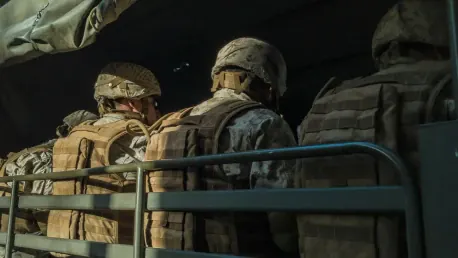Staggering numbers of casualties in large-scale combat operations (LSCO) can present significant challenges for military medical teams, often leading to suboptimal care and unnecessary loss of lives due to the sheer volume and intensity of injuries. To address these challenges, the U.S. Army is focusing on developing and implementing the Automated Battlefield Trauma System, spearheaded by U.S. Army Col. Jay Baker, to modernize and integrate medical logistics and casualty care on the battlefield.
From Disjointed Efforts to Cohesive Systems
In previous military engagements, the methods for handling medical logistics and casualty care were largely fragmented and inefficient. The Automated Battlefield Trauma System aims to rectify this by leveraging real-time data to predict and manage casualty movements and medical resupply. This approach is particularly necessary in LSCO, where the complexity and potential high volume of casualties require a streamlined and efficient system. Unlike disjointed efforts of the past, this new system anticipates and responds to medical needs with precision.
The Role of Real-Time Data in Modernized Trauma Care
The implementation of real-time data in casualty care is crucial to enhancing the speed and efficiency of trauma responses. By capturing and analyzing relevant data, the Automated Battlefield Trauma System can optimize patient flow and resource allocation, ensuring that medical units are adequately supplied and that casualties receive timely care. This shift not only modernizes military medical logistics but also aligns with the broader move from counterinsurgency operations to LSCO.
Importance of Updated Medical Doctrines
For the Automated Battlefield Trauma System to be effective, it must operate within a framework of updated medical doctrines. These doctrines facilitate comprehensive documentation and logistical planning, ensuring that each component of trauma care is integrated into a cohesive system. The collaboration between Col. Baker and U.S. Army Col. Jennifer Gurney, Chief of the Joint Trauma System (JTS), highlights the necessity of these updated practices. Gurney’s experience underlines the importance of continuous data capture, analysis, and adaptation to reduce battlefield fatalities.
Addressing Trauma Care Gaps in Exercises
Practical testing of the Automated Battlefield Trauma System, such as in the Warfighter exercise and Talisman Sabre 23, has revealed critical gaps in casualty management that must be addressed. These exercises provide a complex environment to evaluate and refine trauma care solutions, demonstrating the need for adaptable systems capable of responding to dynamic battlefield scenarios. Inspired by AI applications in targeting, Col. Baker envisions similar technologies enhancing decision-making in casualty care.
Operational Mechanics and Benefits
Central to the system’s operation is the documentation of patient data during Tactical Combat Casualty Care using the M.A.R.C.H. algorithm. This structured approach allows for efficient categorization and triage of casualties, directing them to the appropriate medical facilities based on their needs. Both Gurney and Baker advocate for the system’s simplicity and effectiveness. Streamlined data collection and analysis not only improve battlefield survivability but also enhance overall combat lethality by ensuring soldiers receive timely medical care.
Future Prospects of the Automated Battlefield Trauma System
The journey for the Automated Battlefield Trauma System is far from over. It will undergo further testing in upcoming U.S. Army events such as Project Convergence-Capstone 5, with the goal of establishing it as a formal U.S. Army Program of Record. Baker aims to secure the initiative’s place in military doctrine before retiring, aiming to significantly bolster the Army’s ability to save lives during combat. Enhancing battlefield medical response capabilities will be a pivotal factor in future military success.
A Paradigm Shift in Military Trauma Care
In large-scale combat operations (LSCO), the staggering number of casualties can create monumental challenges for military medical teams. The sheer volume and intensity of injuries often lead to suboptimal care and avoidable loss of lives. Confronted with these challenges, the U.S. Army is committed to enhancing battlefield medical logistics and casualty care through the development and implementation of the Automated Battlefield Trauma System. This initiative, led by U.S. Army Colonel Jay Baker, aims to modernize and integrate medical logistics, ensuring that injured soldiers receive timely and effective treatment. By improving the coordination and efficiency of medical responses on the battlefield, the new system is poised to significantly reduce preventable deaths and improve overall care for wounded personnel. This approach not only hopes to save lives but also endeavors to ensure that the standard of medical care remains high even amidst the chaos of combat, ultimately strengthening the resilience and effectiveness of military medical support in future conflicts.









